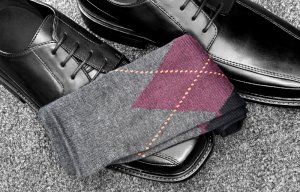
Santoni launches intarsia sock machine with automatic toe closing
With the announcement yesterday that MBI Technology has developed a new version of its circular garment length knitting machine with 42 colour intarsia, KnittingIndustry.com spoke to Denny Y.D. Koo, MBI Technology’s Vice President to get clarification on the MBI-S1342 and its possibilities for intarsia knitting. Koo explained: “The previous maximum number of colours per row in the current market was 36 colours through flat knitting machines developed by

17th July 2008
Knitting Industry
|
Seoul, South Korea
With the announcement yesterday that MBI Technology has developed a new version of its circular garment length knitting machine with 42 colour intarsia, KnittingIndustry.com spoke to Denny Y.D. Koo, MBI Technology’s Vice President to get clarification on the MBI-S1342 and its possibilities for intarsia knitting.
Koo explained: “The previous maximum number of colours per row in the current market was 36 colours through flat knitting machines developed by Japanese and European machine builders. We previously offered 23 colours per row intarsia with our MBI-S0823 and MBI-S1123 models with variable gauges.” The MBI-S0823 allowed intarsia knitting from 7-9 gauges on the same machine and the MBI-S1123 was used for 10-12 gauge production on the same machine using the variable gauge principle. Koo continued: “Now our MBI-S1342 can knit 42 colours per row intarsia which gives better colour patterning possibilities than even flat knitting. “
The MBI-S1342 has a diameter of 25.1 inch, is a standard 13 gauge machine with variable gauges from 12 to 14, and has 42 feeders for intarsia and 2 feeders for the rib. According to MBI, the feeders for intarsia and rib border in MBI-S1342 provide a variety of intarsia designs and the machine can produce any size of sweater.
“As the MBI-S1342 is a circular knitting machine, its cylinder reciprocates to create excellent intarsia joints especially when producing detailed patterns such as vertical stripes, curves, and thin lines.” Koo said.
Koo also claims that the MBI-S1123 also has shorter lead times for design changes and quicker knitting times than previous models which make it better for small batch quick response production. When asked about the competition from dominant flat knitting machinery builders Koo explained: “Using flat bed type for Intarsia knitting thickens and creates dummy stitch on both ends of the fabrics, requires the unnecessary floating yarn removal and causes low colour resolution. Our new Intarsia machine solves these problems and represents much more detailed design and colours by using circular knitting.”
Flat knitting machine builders have been successful by introducing specialist intarsia machines with up to 36 feeders in recent years. Good numbers of machines have been sold in fine gauges including 18 gauge in traditional intarsia knitting countries such as Italy and Scotland.
It remains to be seen just how versatile the MBI-S1342 will be in terms rapid design changes. Another important issue will be how competitive will it be against flat knitting in terms of production speeds when using the full complement of 42 intarsia feeders. The MBI-S1342 is obviously aimed at the mass produced intarsia market especially in finer gauges but the high quality end of the intarsia market will still be dominated by flat knitting due to the flat knitting machines ability to knit garment panels to shape, a prerequisite for high quality intarsia sweaters.

Business intelligence for the fibre, textiles and apparel industries: technologies, innovations, markets, investments, trade policy, sourcing, strategy...
Find out more